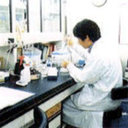Epicutaneous Allergic Sensitization by Cooperation between Allergen Protease Activity and Mechanical Skin Barrier Damage in Mice.
Märksõnad
Abstraktne
Allergen sources such as mites, insects, fungi, and pollen contain proteases. Airway exposure to proteases induces allergic airway inflammation and IgE/IgG1 responses via IL-33-dependent mechanisms in mice. We examined the epicutaneous sensitization of mice to a model protease allergen, papain; the effects of tape stripping, which induces epidermal barrier dysfunction; and the atopic march upon a subsequent airway challenge. Papain painting on ear skin and tape stripping cooperatively promoted dermatitis, the skin gene expression of proinflammatory cytokines and growth factors, up-regulation of serum total IgE, and papain-specific IgE/IgG1 induction. Epicutaneous sensitization induced T helper (Th) 2 cells and Th17 differentiation in draining lymph nodes. Ovalbumin and protease inhibitor-treated papain induced no or weak responses, whereas the co-administration of ovalbumin and papain promoted ovalbumin-specific IgE/IgG1 induction. Wild-type and IL-33-deficient mice showed similar responses in the epicutaneous sensitization phase. The subsequent airway papain challenge induced airway eosinophilia and maintained high papain-specific IgE levels in an IL-33-dependent manner. These results suggest that allergen source-derived protease activity and mechanical barrier damage such as that caused by scratching cooperatively promote epicutaneous sensitization and skin inflammation and that IL-33 is dispensable for epicutaneous sensitization but is crucial in the atopic march upon a subsequent airway low-dose encounter with protease allergens.



